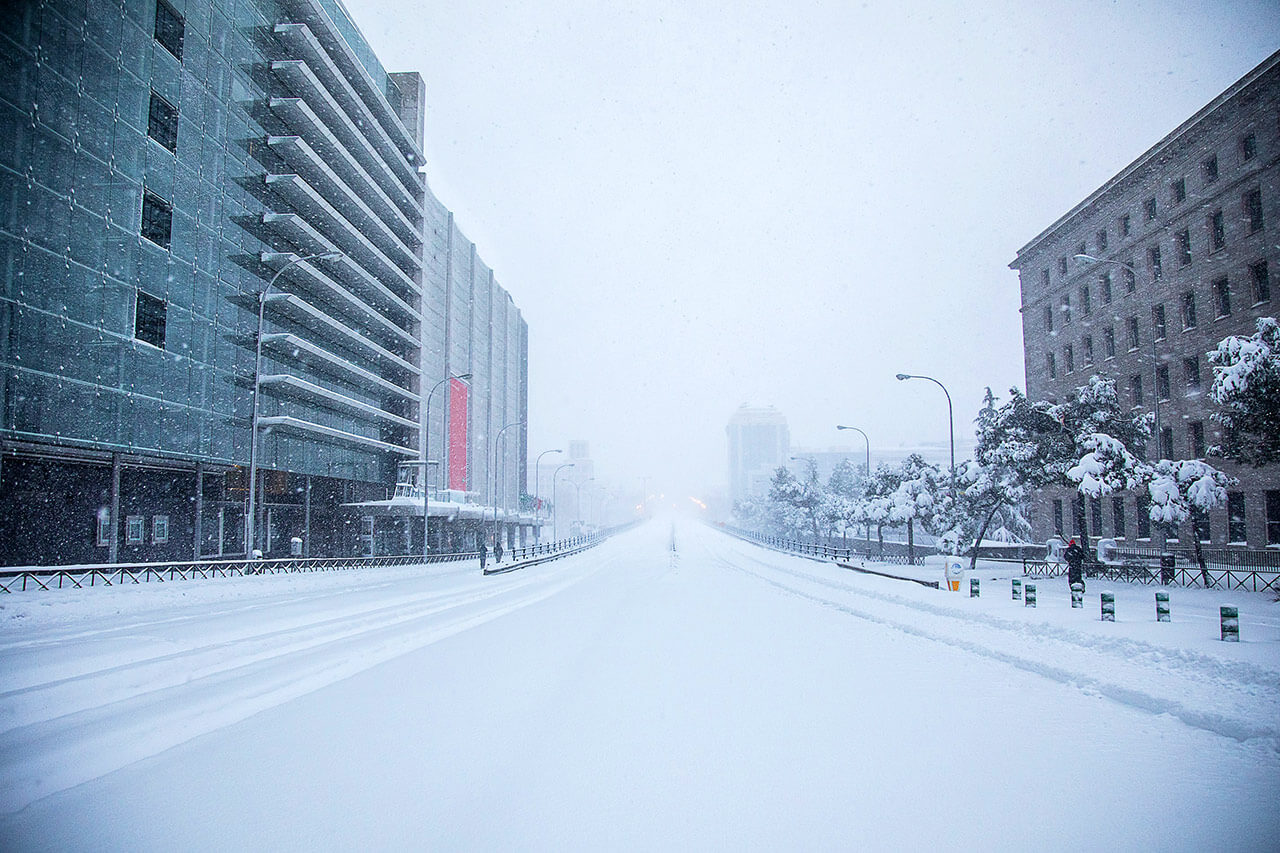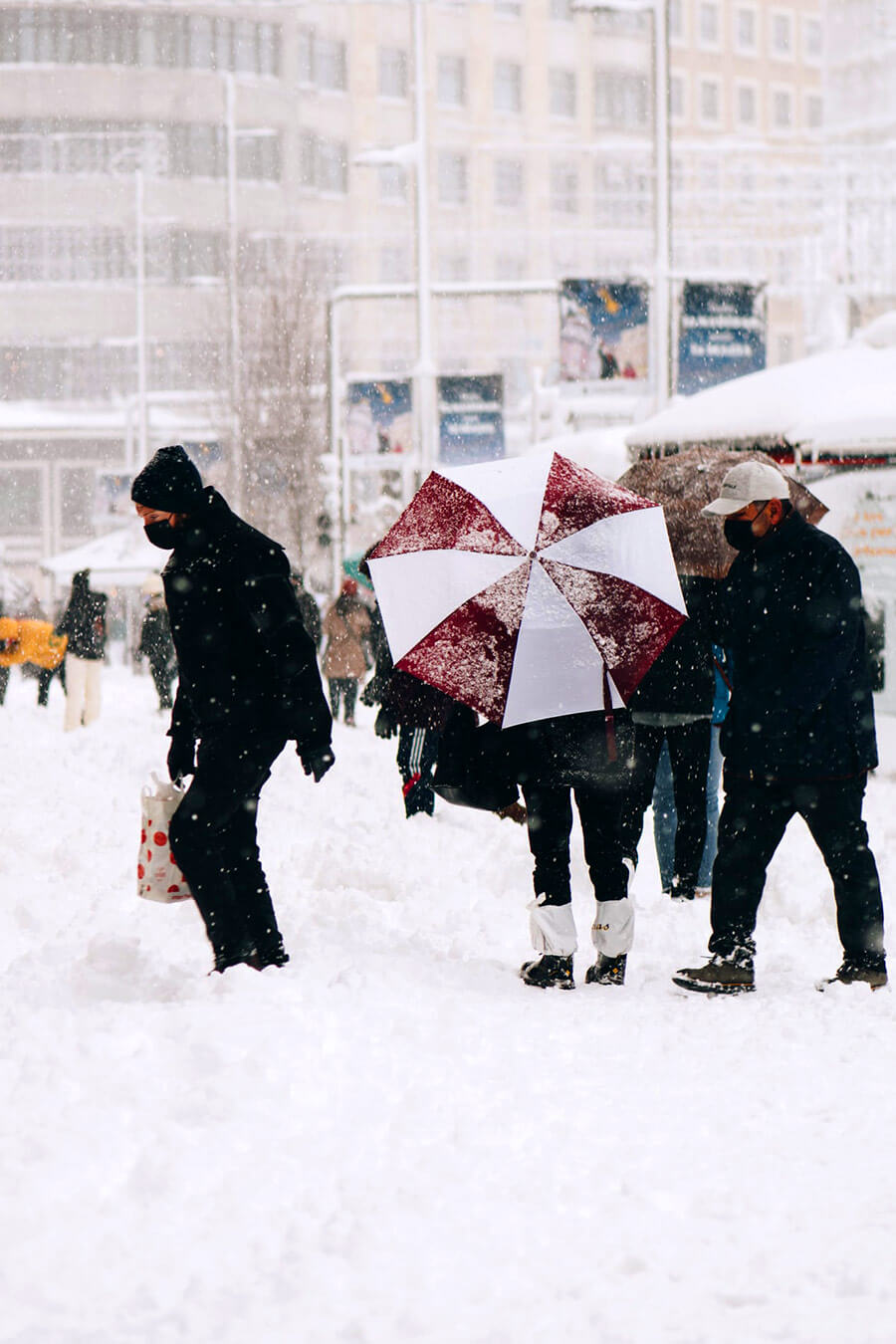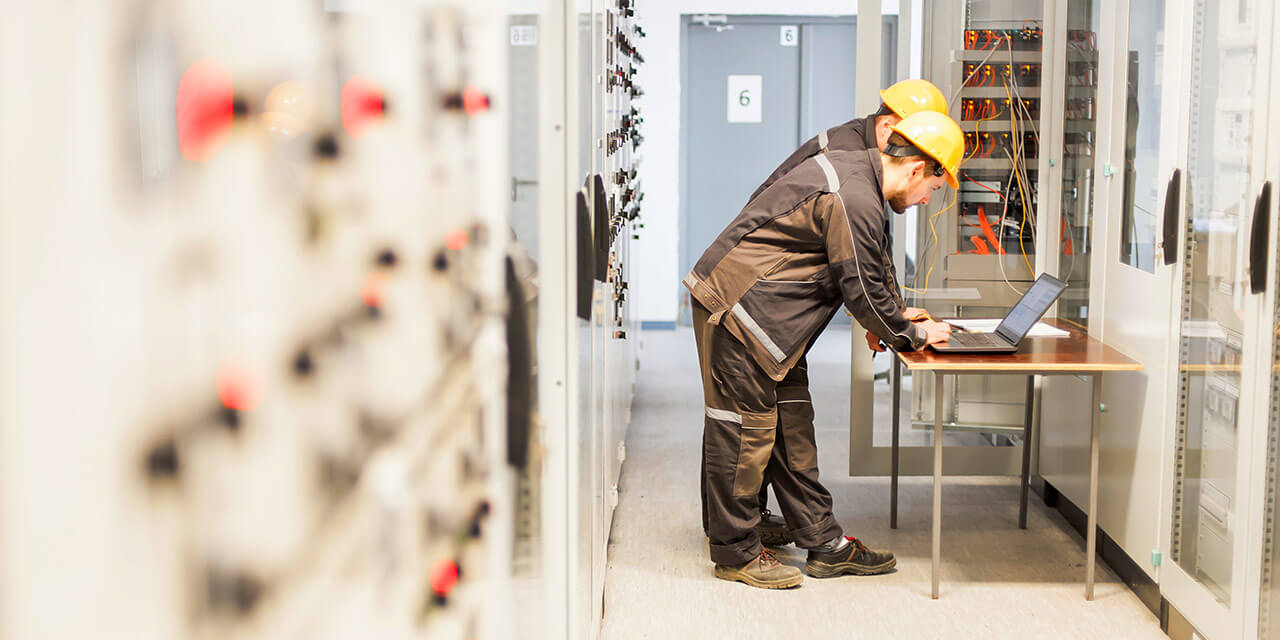Although hospitals are safe places, they can also be affected by the weather. In most cases, the main consequence of extreme weather conditions such as a cold and snowy storm is usually the increase in patients, which can collapse a hospital if it is not prepared for it.
However, there are certain basic measures to help ensure the operation of a hospital in times of extreme weather conditions.
The world said goodbye to 2020 with some relief for turning its back on the “year of the pandemic”, but in Spain 2021 it surprised us with a storm baptized as Filomena that has left historical snowfalls. Today we want to talk about how to prepare for extreme weather conditions in a hospital.
In the early days of the storm, people took to the streets to enjoy Filomena like never before. However, snow is not all that glitters because in these first weeks of the year we are seeing how the health sector is facing the consequences of the frost and, of course, the third wave of infections caused by COVID19. Were the hospitals prepared for Filomena?

More visits to hospitals
While it is true that health centers and hospitals are designed to cope with any type of adverse event, we cannot say the same for citizens and cities. The snow and the historic frost in the center of the country make walking on the street a danger. In fact, the Government is considering cataloging the emergency (a concept formerly known as a catastrophic zone) for Madrid and Castilla La Mancha, two of the regions most affected by frost and polar cold.
Against this white backdrop, visits to the emergency room have increased notably, especially those related to falls and slips that cause breaks and bruises. In Madrid, for example, in the middle of Filomena they attended about 1,200 trauma emergencies in a single day.
The main problem that causes this type of extreme climatic conditions in a hospital is not only the increase in patients, but also, for example, the difficulty of reaching hospitals, both by people who need assistance and by workers . Filomena has caused many health workers to be unable to reach hospitals and has also made it difficult to distribute medicines.
In short, hospitals are prepared for all kinds of adversities but, with the change of seasons, especially winter and summer, it is important that they can maintain their activity at full capacity to face extreme weather conditions.

One of the most basic principles in the health and care management of a hospital is to have sufficient accommodation capacity for all the people who require it. And this has been precisely one of the great problems in 2020 related to the pandemic. Hospitals collapsed because they were not prepared to treat and accommodate so many people.
On the other hand, it is important that hospitals have food reserves for both patients and medical personnel in case of emergency and must have a supply of basic items for the treatment of people.
Extreme weather conditions in hospitals
Most of the extreme climatic conditions in hospitals actually take place outside, that is, they affect hospitals in the same way as other buildings or centers. However, the hospital, due to its role in society, has to guarantee its activity 24 hours a day, 365 days a year.
Snowfalls that make access to hospitals difficult, electrical storms that can cause power outages, extreme heat waves that require ventilation and air conditioning in rooms and common areas of hospitals … there are various climatic conditions, more or less extreme, that can put hospitals in trouble. To avoid this, it is important that they are prepared from both a technical and human point of view.
Tips and recommendations
Although each meteorological phenomenon has its own peculiarities, there are a series of basic recommendations to face adverse weather conditions in hospitals:
- Have a protocol and organization and action measures so that medical personnel know how to act in each situation.
- Have signaling means that warn of possible dangers.
- Reduce the risks of moving personnel and avoid their exposure to environmental factors.
- Have enough beds and capacity to attend more patients as a result of extreme weather conditions.
- Have basic equipment to be able to offer accommodation to medical personnel in case they cannot leave the hospital (rooms, beds, water, food …)
- In the specific case of electrical storms, it is important to have a good hospital electrical safety system to deal with a possible power outage without affecting the care and treatment of the patient.

Good practices to combat extreme weather conditions in hospitals
A very good way to learn how to combat extreme climatic conditions in hospitals is to know how hospitals in other parts of the world are prepared and with what strategies, systems or devices they have.
Children’s Hospital of Philadelphia
They have an alert system to inform health personnel about extreme weather conditions. It is activated automatically when the system detects an abnormality in the climatic range. This alert system also provides directions on how to get to the nearest hospital safely, what to do if you have to spend the night in the hospital, etc. It also has 500 inflatable mattresses.
University of Virginia
They have 150 exam rooms to facilitate the temporary accommodation of medical personnel when the climatic conditions that winter causes in this area are extreme. They have heating and air mattresses, among other elements.

More weather events in the future
One of the direct consequences of climate change is extreme weather events (forest fires, heat waves, floods, storms…). In this context, it is becoming increasingly necessary for hospitals to be prepared to face the consequences caused by extreme weather conditions.
Health systems cannot be vulnerable to climate variability. Safe and prepared environments must be created to reduce these vulnerabilities because their impact has a direct impact on patient care.
One tool that can help hospitals combat extreme weather events or all kinds of natural disasters is technology. In fact, the Pan American Health Organization is offering technical assistance to Caribbean countries in order to develop a smart hospital project and improve their resilience.



